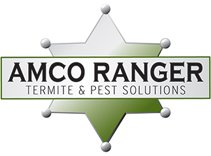What Diseases Do Mosquitoes Carry?
Mosquitoes are more than just buzzing-in-your-ear nuisances causing itchy skin when you get bit. They also carry deadly diseases. In fact, mosquitoes are one of the deadliest creatures in the world because of the many diseases they can transmit.
The primary diseases they carry include:
West Nile virus
In the United States, the West Nile virus is the most common mosquito-borne disease. It can be largely asymptomatic, but 20 percent of people who get the disease develop symptoms such as a fever, diarrhea, stiff neck, swollen lymph nodes, and muscle weakness. The virus can develop to the point where it starts to impact your central nervous system, too, which causes violent convulsions and paralysis. There were more than 2,500 West Nile cases reported in the United States in 2018, according to the CDC.
Malaria
This is the most deadly mosquito-borne disease. In 2015, there were hundreds of millions of cases of malaria reported, and nearly 500,000 deaths because of the disease. This makes up more than half of all deaths that come from mosquito-borne illnesses. The primary symptoms of malaria are high fever, chills, nausea, diarrhea, and vomiting.
Yellow fever
This disease is named after the yellow-ish hue it can cause in patients as a result of jaundice (a condition that affects the liver), which is a symptom of yellow fever. Other symptoms include headaches, fever, and fatigue. Yellow fever is a highly fatal disease if it’s contracted – half the people who get it die within a week to 10 days, according to the World Health Organization. However, it is preventable with a vaccination. It is currently most prevalent in Central America, South America, and Africa, and it causes between 30,000 and 60,000 deaths per year.
Zika
This disease is largely asymptomatic or minimally symptomatic. If it does show symptoms, they may appear in the form of a fever, skin rash, headache, joint pain, and more. However, Zika has proven to have more severe effects on pregnant women and leads to babies being born with brain and head defects.
Japanese Encephalitis
Japanese encephalitis reveals itself with vomiting, headaches, a high fever, and joint and muscle pain. The symptoms take anywhere from a few days to two weeks to show up after you’ve been bitten. The disease is present in mosquitoes ranging from northern Asia all the way to almost every tropical region in the world, according to the CDC. There is a vaccine for Japanese encephalitis.
It should be noted that just because you are bitten by a mosquito, doesn’t mean you have been infected with a disease. If you suspect you may have a mosquito-borne illness, see your doctor.
We Can Help
If you are having issues with mosquitoes, give Amco Ranger a call to get a free quote for professional, ongoing defense in your yard. Treatments are tailored to your property and are applied by certified, trained technicians. Give us a call today if you need help getting rid of pests in your home in Cottleville, St. Peters, O’Fallon, St. Charles, St. Louis, and surrounding communities.
